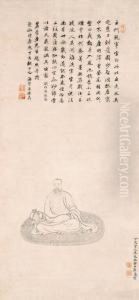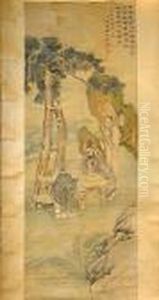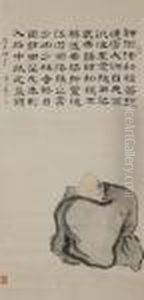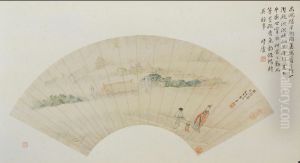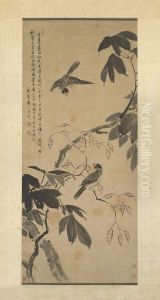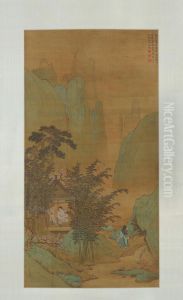Yu Zhiding Paintings
Yu Zhiding was a prominent Chinese painter during the Qing Dynasty, known for his contributions to the development of portrait and figure painting in Chinese art. Born in 1647, his life spanned a period of significant change in China, as the Ming Dynasty fell and the Qing Dynasty rose to power. Despite these tumultuous times, Yu Zhiding managed to secure a place for himself in the annals of Chinese art history through his exceptional talent and innovative techniques.
Yu Zhiding specialized in figure painting, particularly known for his refined portraits of scholars, officials, and ladies of the court. His works are characterized by their meticulous detail, graceful lines, and the subtle yet expressive portrayal of his subjects. Yu's mastery of brushwork and his ability to capture the nuances of personality and status in his portraits set him apart from his contemporaries. He was also adept at painting flowers, birds, and landscapes, showcasing his versatility as an artist.
Yu Zhiding's art was deeply influenced by the earlier traditions of Chinese painting, yet he managed to infuse his works with a fresh perspective and elegance that were unique to his style. He was particularly admired for his use of ink and color, which he employed with precision and delicacy to bring his subjects to life. His contributions to the art of the Qing Dynasty were significant, as he helped to bridge the gap between the Ming and Qing artistic traditions, while also pushing the boundaries of portrait painting.
Despite the high esteem in which he was held during his lifetime and the influence he had on subsequent generations of artists, Yu Zhiding's work was, for a time, somewhat overshadowed by that of his more famous contemporaries. However, modern scholarship and appreciation of Qing Dynasty art have led to a resurgence of interest in his paintings. Today, Yu Zhiding is celebrated as one of the great masters of Chinese art, and his paintings are highly prized by collectors and museums around the world. Yu Zhiding passed away in 1709, leaving behind a legacy that continues to inspire and captivate art lovers and historians alike.
